How to Apply Denture Adhesive
Using denture adhesive can provide more comfortable and secure dentures. Ensure your dentures are clean and dry before application. Clean with Tablets to ensure the adhesive sticks correctly. Once cleaned, dry the dentures thoroughly before proceeding.
Once you have ensured that your dentures are clean and dry, it is time to apply the adhesive. Squeeze a small amount of denture adhesive cream onto the inner surface of the bottom portion of your denture (where it will sit on top of your gums). Spread the cream evenly across the entire surface. Then, fit the upper portion of the denture into place on top of it. This will help keep it securely in place while you eat or talk.
Finally, rinse off any excess adhesive from around the edges of your mouth after you have put in and adjusted your dentures. If you find that you need more grip or stability throughout the day, you can always add a bit more adhesive during regular brushing sessions or when necessary.
With proper care and attention, applying dental adhesives can be a simple and effective way to keep your smile looking great!
How does Denture Adhesive Work?
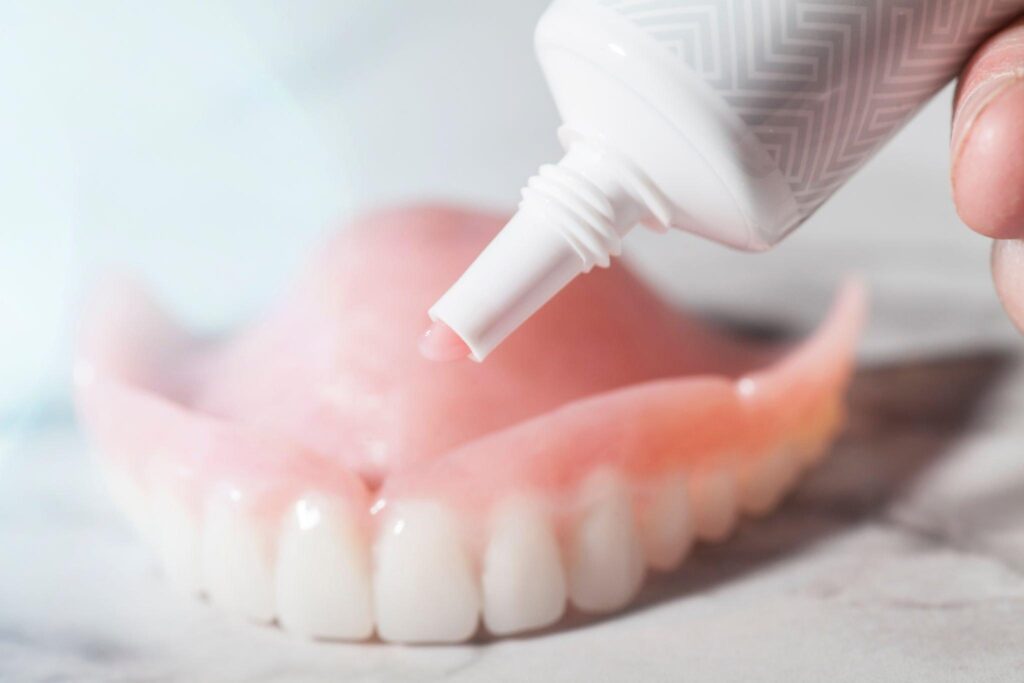
Denture adhesive is a type of glue that helps to keep dentures secure and comfortable in your mouth. When applied correctly, this adhesive will bond tightly to the denture and gum tissue, allowing you to eat, talk, and move comfortably.
The adhesive works by reacting with saliva or water in your mouth to form a sticky substance that holds the denture in place.
When applying denture adhesive, it’s important to make sure that the denture is clean and dry before applying a small amount of cream onto the inner surface of the bottom portion of your denture.
This should be spread evenly across the entire surface before placing the top portion of your denture into place on top. Once finished, any excess adhesive can be washed away from around the edges of your mouth.
For those who need additional grip or stability throughout their day, more cream can be added during regular brushing sessions or when needed. With proper care and attention, using dental adhesives can help you maintain a secure smile for years to come!
How to Remove Denture Adhesive?
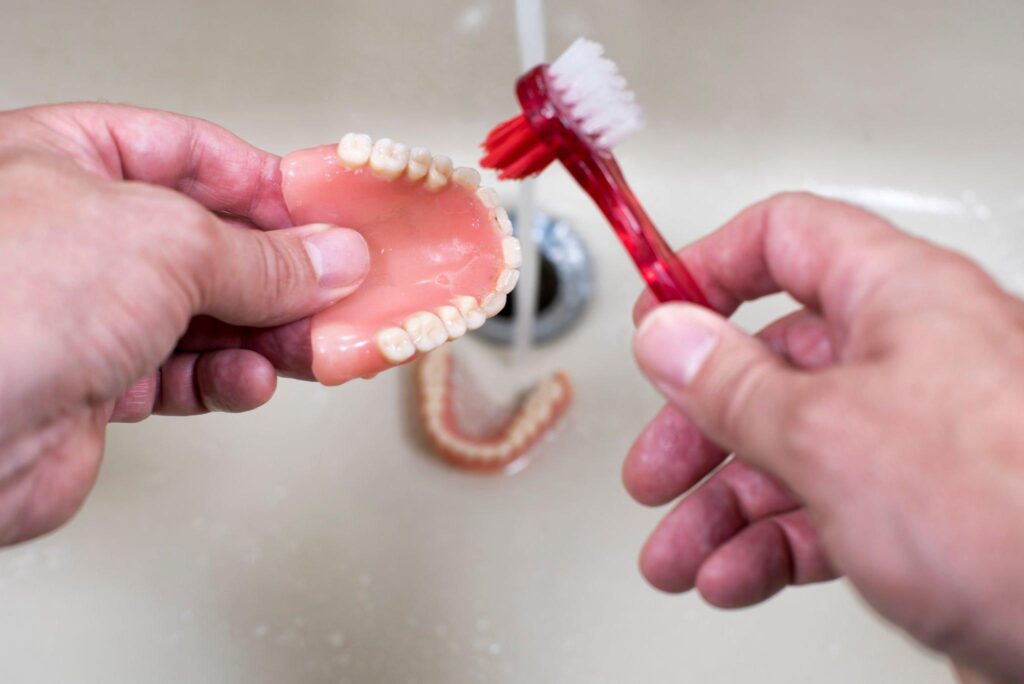
Removing denture adhesive can seem like a daunting task, but with the right approach, it doesn’t have to be. To start, use a damp cloth or tissue to gently wipe away any excess adhesive from the surface of your denture. You may also find it helpful to use a soft-bristled toothbrush for more stubborn spots. Once the majority of the adhesive has been removed, you can then rinse your dentures thoroughly with lukewarm water and dry them off with a clean towel.
If you’re still having difficulty getting rid of any remaining residue, try soaking your dentures in warm water mixed with baking soda or white vinegar. This should help loosen up any stubborn bits and make them easier to remove.
You can also use an adhesive remover specifically designed for dentures – just follow the instructions provided on the packaging carefully and make sure that you rinse thoroughly before re-inserting your denture.
By following these simple steps you can easily and safely remove all traces of your denture adhesive in no time!
What Types of Adhesives are Available
When it comes to denture adhesives, there are a variety of options available. Some are creams that are applied directly to the denture, while others come in the form of powders or strips.
- 1) Creams tend to be more comfortable and provide a better fit than other types.
- 2) Powders offer a strong hold but can be difficult to apply evenly on the denture surface.
- 3) Strips act as an additional layer of protection between the denture and the gums for added security. All types should be used according to their instructions for best results and minimal irritation to the gums.
Whichever type you choose, make sure you check with your dentist before using any adhesive product, as they can provide advice on which type is best suited for your particular needs.
How to Use Denture Powder Adhesive
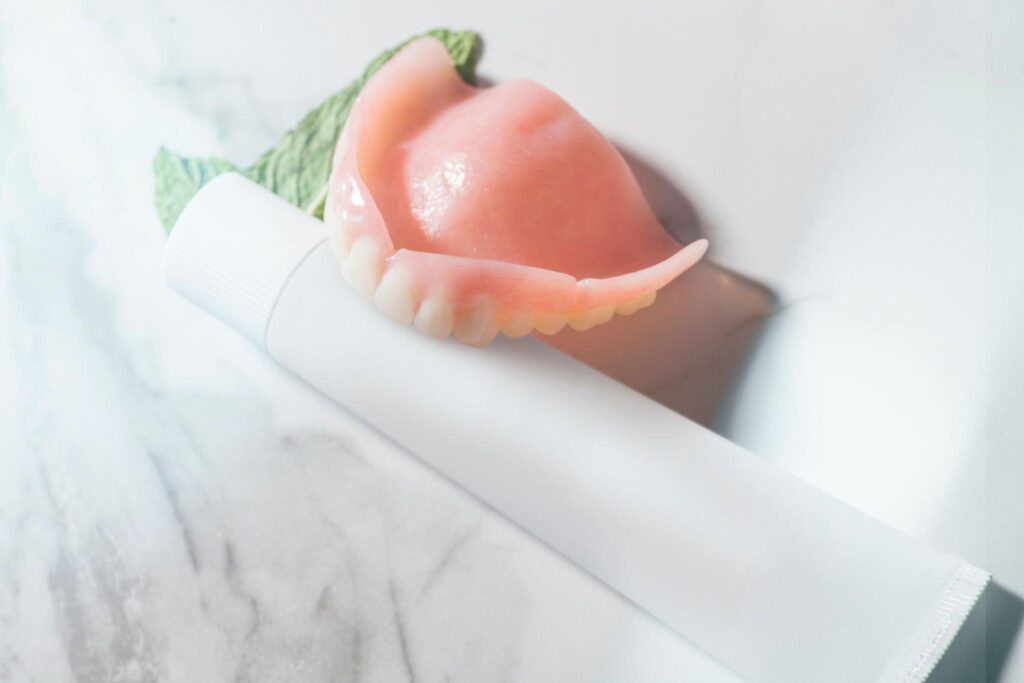
Denture powder adhesive is one of the most commonly used types of denture adhesives. Before using this type of product, it’s important to follow the instructions on the packaging carefully. To begin, dry your dentures thoroughly and spread a thin layer of powder over both sides of the denture.
Make sure you use a clean fingertip or brush when applying the powder, as this helps ensure even coverage. Once you have applied the powder, place your dentures in your mouth and bite down gently for a few seconds to help them adhere properly.
Finally, rinse your mouth with water to remove any excess powder that may remain. With some practice, you should be able to achieve an even and secure fit with minimal irritation.
Denture Adhesive Strips
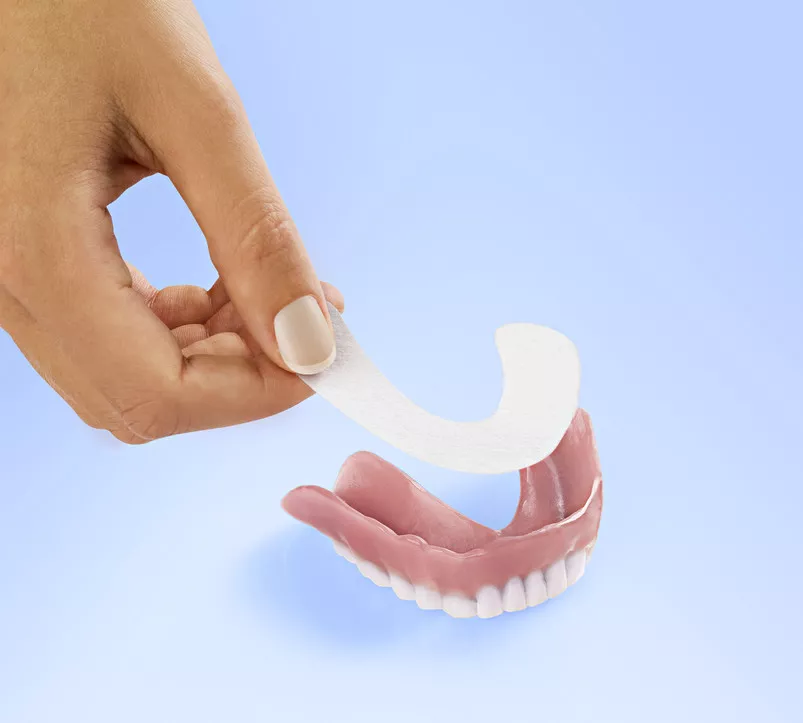
Denture adhesive strips are an easy and convenient way to keep your dentures in place. They’re thin strips of adhesive material that you apply to the inside of your denture before inserting it. This helps reduce slippage and provides a secure fit for up to 12 hours.
To use denture adhesive strips, start by cleaning your dentures with tablets and make sure they are completely dry afterward. Peel off the backing from one strip of adhesive and carefully press it into place on the inner surface of your denture.
Make sure that you evenly distribute the strip along the surface as much as possible, without leaving any gaps or wrinkles in the material. Repeat this process with a second strip if necessary.
Once you’ve applied both strips, insert your denture into your mouth and press it firmly until it is properly seated. To remove any excess adhesive, gently wipe away with a damp cloth or tissue.
Finally, rinse your mouth out with water or mouthwash to help keep it clean and fresh! With these simple steps, you can enjoy a secure and comfortable fit from your dentures every time!
FAQ
Denture powder adhesive is a popular and effective way to help keep dentures in place. If you’re considering using this type of product, here are answers to some of the most common questions:
Q: How long does denture powder adhesive last?
A: Depending on how often you use it, denture powder adhesive can last up to 12 hours. However, it is recommended that you remove your dentures and reapply the product every evening before bed.
Q: Is it safe to swallow denture powder adhesive?
A: No, swallowing this type of product should be avoided as it can cause gastrointestinal issues. Make sure to rinse your mouth thoroughly with water after applying the product.
Q: Can I use regular toothpaste instead of denture powder adhesive?
A: It is not advised to use toothpaste as a substitute for denture powder adhesive, as the toothpaste does not provide the same level of adhesion or protection from irritation.
Q: What is the most effective denture adhesive available?
A: The best denture adhesive without zinc is Super Poligrip Free Denture Adhesive Cream.
How Long After Applying Can I Eat?
When using denture powder adhesive, it is important to wait a certain amount of time before eating or drinking. Generally, you should give the adhesive about five minutes to adhere and dry properly before eating or drinking anything.
This will help ensure that the dentures stay in place and will not move around while you are consuming food or beverages. It is also important to note that when drinking hot liquids, can cause the adhesive to loosen and weaken its grip on your dentures. Therefore, it is best to wait at least 30 minutes after applying the product before drinking something hot.
What is the Drying Time for Denture Adhesive?
Denture glue, also known as a denture adhesive, can be a great way to keep your dentures in place and secure. But it is important to know how long it takes for the glue to dry properly so that you can enjoy the benefits of wearing your dentures comfortably.
Generally speaking, most types of denture adhesives take anywhere from five minutes to one hour to fully dry. The time will depend on the type of adhesive used and how thickly it was applied. Using too much adhesive may increase the drying time while using too little could result in a weak bond between the denture and your gums.
When applying denture glue, make sure you read the instructions carefully and apply an even coat over your entire gum line for the best results.
Additionally, you should avoid eating or drinking anything until the adhesive has had ample time to set and become fully dry. Doing so will help ensure a secure fit that won’t come loose while consuming food or beverages.
Can Dentures be Permanently Bonded?
Dentures can be permanently secured in the mouth, depending on certain parameters. While it is possible to use a strong adhesive to secure dentures in place for a longer period of time, it is generally not recommended.
This is because the gum tissue can become irritated and inflamed from the adhesive, which can lead to uncomfortable symptoms and cause damage over time.
Additionally, using a permanent adhesive to keep your dentures in place can make them difficult to remove when needed for cleaning or repairs. It’s best to talk with your dentist about what type of adhesive would be best for you and how often it should be used.
In some cases, non-permanent adhesives may provide enough security without causing any long-term issues.
How Many Times a Day Should you Apply Denture Adhesive?
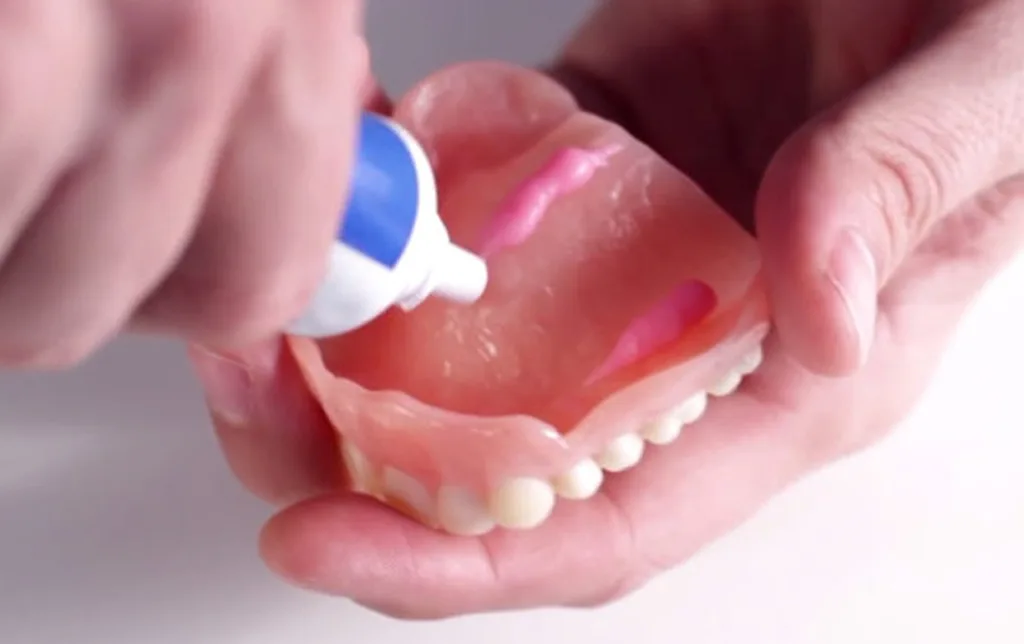
Applying denture adhesive is an important step in making sure your dentures stay secure and comfortable. The amount of adhesive used depends on the type of dentures you have, as well as how much movement they experience throughout the day.
Generally, it is recommended to apply a thin layer of adhesive once a day, just before wearing your dentures. If the dentures start to feel loose or uncomfortable during the day, you can reapply a small amount of adhesive.
Be sure to clean off any excess adhesive before putting your dentures back in place. It is also important to use only quality adhesives specifically designed for dentures, as regular glues may not provide enough security and can cause irritation to the gums.
How to Use Denture Adhesive
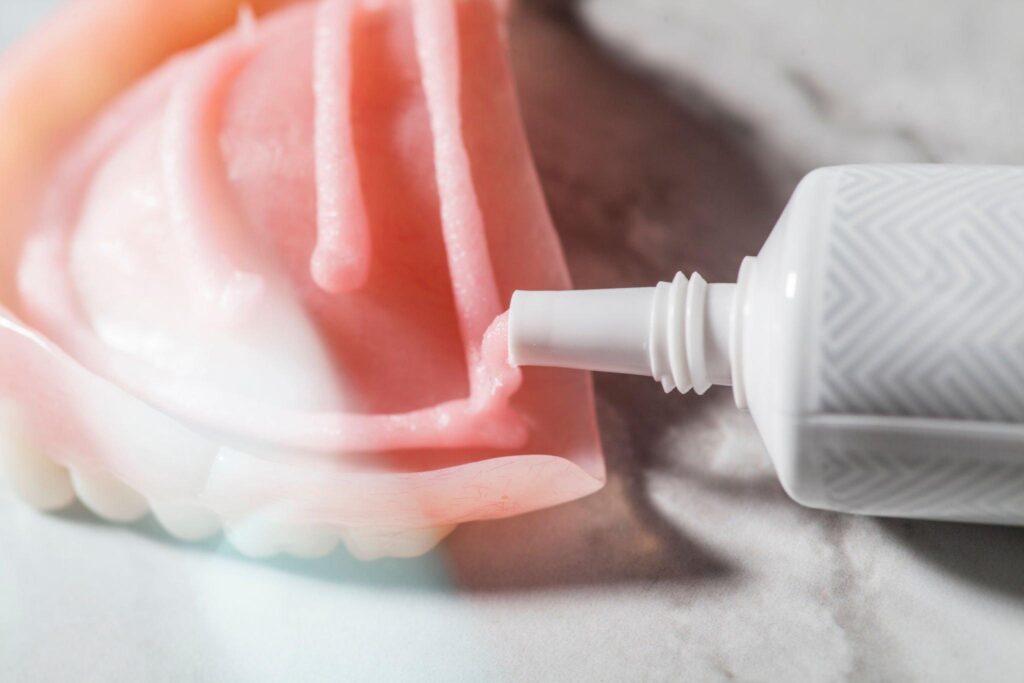
Applying denture adhesive correctly is essential for ensuring that your dentures stay secure and comfortable. First, make sure that the adhesive you are using is specifically designed for dentures and follow the instructions on the package.
Start by cleaning your dentures with a soft toothbrush and warm water to remove any food particles or debris left from eating. Next, apply a thin layer of denture adhesive to one side of your gum line, making sure to cover the entire area where your denture will rest.
Then, press your dentures into place and hold them there for several seconds before releasing them. Finally, wait about five minutes before eating or drinking anything to allow the adhesive to set properly.
It is important to read the instructions on the package of denture adhesive carefully and follow any directions provided. Denture adhesives can vary in terms of how much should be used, how often it should be applied, and even how long it takes for the adhesive to set.
Applying too little or too much adhesive could result in a weak bond between your dentures and your gums, so make sure you know what the manufacturer recommends before using their product. Additionally, you should give the adhesive ample time to dry properly before eating or drinking anything.
Maintaining Your Dentures
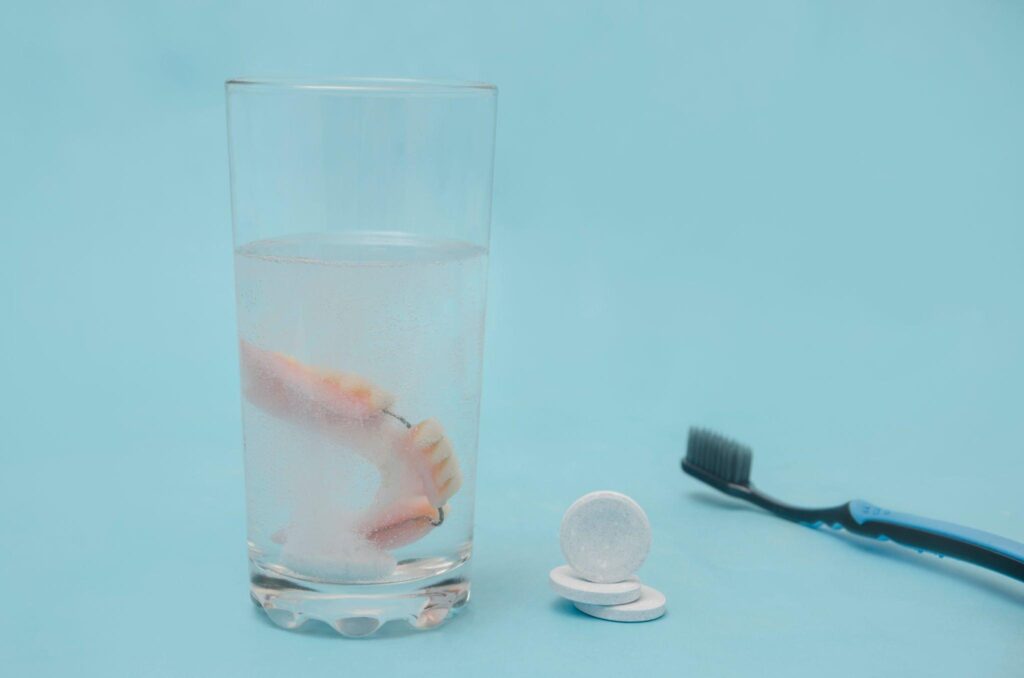
The American Dental Association emphasizes the importance of good oral hygiene, even when wearing full dentures. To avoid plaque buildup and keep dentures stain-free, it is recommended to practice proper care on a regular basis. Through this, the lifespan of dentures can be extended, though adjustments and professional care may still be necessary over time.
Maintaining good oral hygiene when wearing dentures is important. Brushing your gums, tongue, and the roof of your mouth before putting in dentures can help remove plaque and improve circulation.
Rinse your dentures with water to clear away food particles and other debris. It is recommended to brush dentures daily with a soft-bristled toothbrush and non-abrasive toothpaste in order to keep them clean and avoid damage.
Refrain from using bleaching or whitening agents that could reduce the strength of your dentures. When not in use, store dentures in a container filled with water to avoid damage.
Under no circumstances should you attempt to repair or adjust your dentures by yourself. It is important to schedule regular appointments with your dental professional.
Adhesives Don’t Have to Be Part of Your Reality
Dentures adhesives can be used to temporarily secure your dentures in place, but they are not a substitute for well-fitted dentures. If you experience difficulties with your dentures, Wellness Dental can offer more comfortable and secure solutions through the use of advanced techniques. They can give you confidence and improve your quality of life.

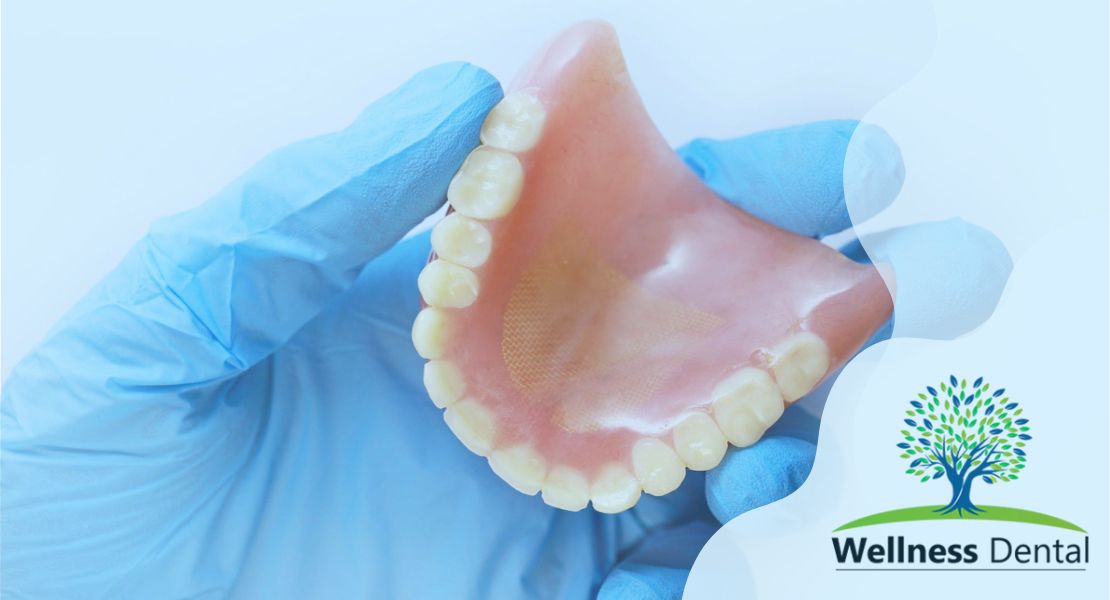


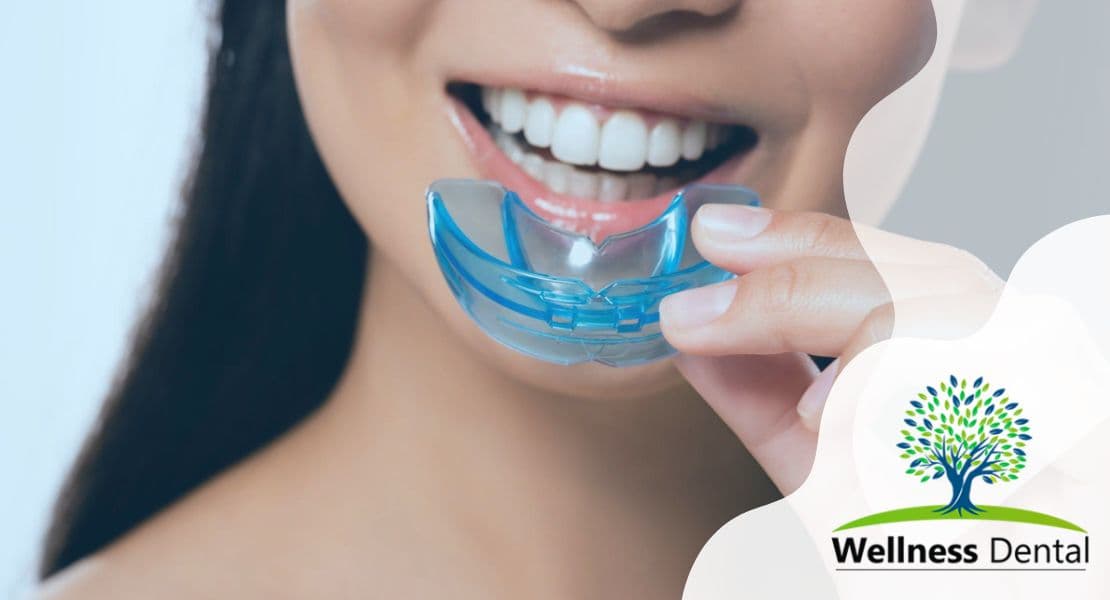

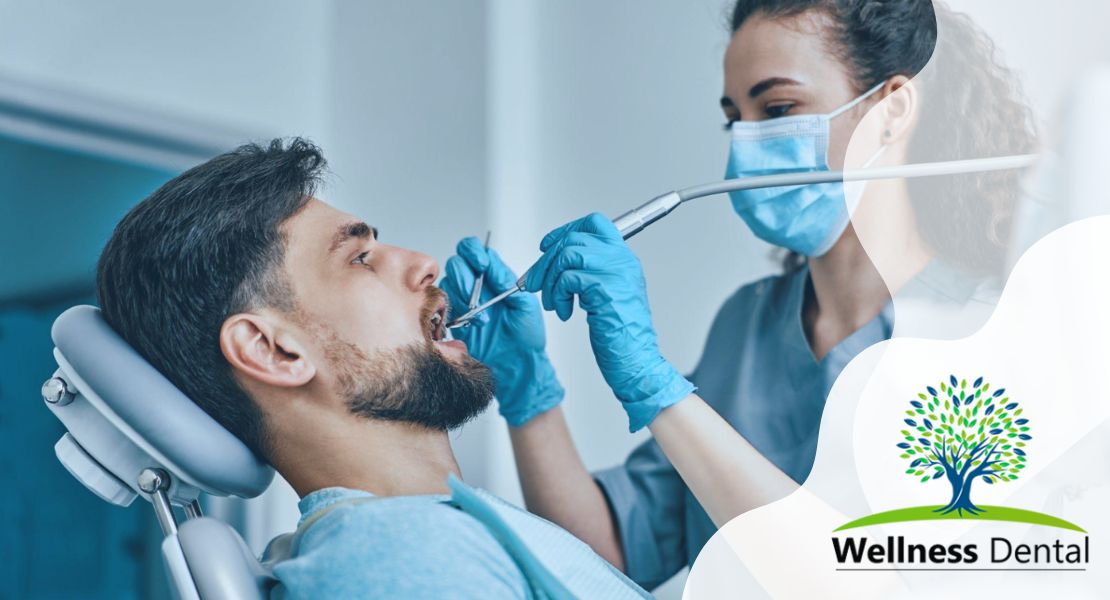
Thank you